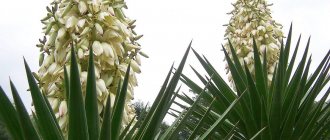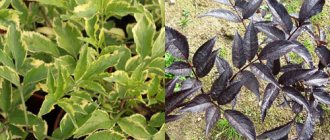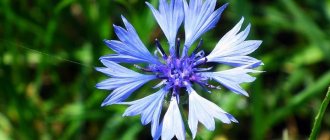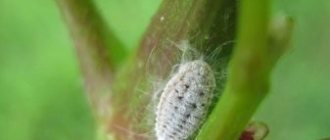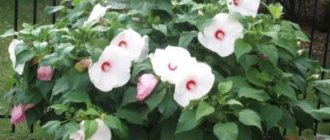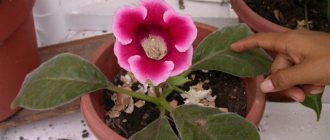Description of foxtail
Akalifa belongs to the Euphorbiaceae family. In the wild it is an evergreen shrub or herbaceous perennial. This plant is common in the tropical forests of Oceania, Southeast Asia and Australia. The height of the bush depends on the species.
The largest varieties grow up to 2.5-3 m.
Main characteristics:
- leaves are ovoid with finely toothed edges;
- color varies from green to different shades of red;
- small flowers are collected in spike-shaped inflorescences.
There are also compact varieties for growing as indoor flowers. They reach a maximum of 1.5 m in height. Such plants have ovate leaves. The inflorescences are pink-red in color.
When growing such a plant, remember that it is poisonous . After each contact with it, you should wash your hands thoroughly. It is not recommended to plant it in gardens or apartments where children can play.
Other names for this flower
Akalifa is called differently in different countries. The second name is foxtail. There are also variations of “fox tail” or “fire cat tail”.
Types and description of Foxtail
Foxtail plant: photo
Foxtail is divided into two groups:
- The first group is quite popular; such plants are distinguished by their ovoid shape and bright green leaves. They can reach a length of up to 60 centimeters; during the flowering period, fluffy red inflorescences appear on the bushes.
- The second group is distinguished by its color, as it is unusually beautiful. They are turquoise in color with crimson spots. Such plants, as in the first group, have elongated leaves and an ovoid shape.
The most famous types are:
1. Akalifa oakleaf
The leaves are light green, heart-shaped, can reach up to 5 centimeters in length, with teeth along the edges of the leaves. The inflorescences are red, can reach up to 9 centimeters, and are spike-shaped.
2. Akalitha Godsefa
The leaves are very bright green, this plant is a hybrid. In the sun, the flower takes on a crimson hue.
3. Hairy acalypha
This species is native to Polynesia; its peculiarity is that its height can reach up to 3.5 meters. The inflorescences reach up to 60 centimeters in length, they are spike-shaped and drooping. The color is either white or red.
4. Akalifa Vilkez
Reaching up to 170 centimeters in height, Vilkesa is an evergreen shrub whose leaves are wide, elongated and have an interesting copper-turquoise tint with red spots.
Types of flower with photo
Akalilife is divided into two main groups:
- The first includes species with bright red fluffy inflorescences. Their length can reach 50 cm.
- The second group is red, bronze-green and red-brown flowers. They are rather inconspicuous, but they grow very quickly.
The genus Akalifa includes 454 species. More details about this can be found here.
Popular varieties
Next, you can read the description of popular flower varieties and look at their photos.
Vilkez
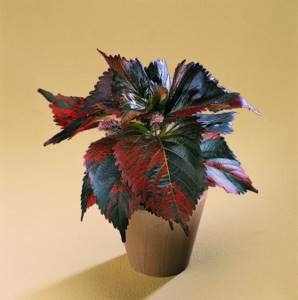
This subshrub is capable of growing up to 3 m. Straight shoots are reddish in color . Large leaves have a greenish-bronze tint. The inflorescences are small and inconspicuous.
Bristly haired
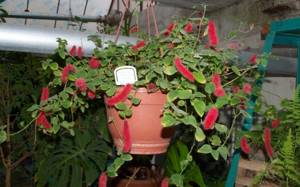
Features: Deep green leaves. Red ears grow up to 50 cm. There is a subspecies with white inflorescences.
Indian
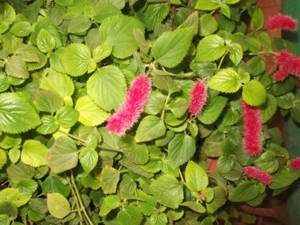
This is a low variety of half-meter annual. The flowering period lasts from July to September.
South
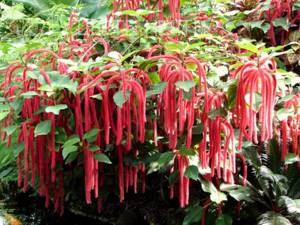
The annual has thin roots and a ribbed branching stem . It has large fluffy ears.
Godsefa
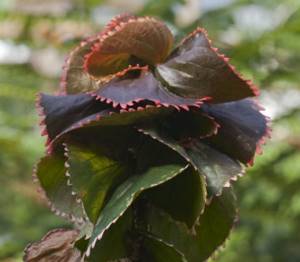
This hybrid has inconspicuous flowers with large, toothed leaves. Bronze greenery is combined with bright copper-red inflorescences.
oak leaf
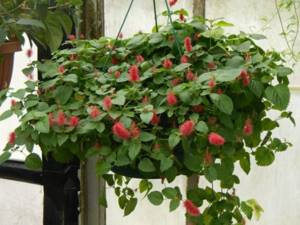
This variety is cultivated using the hanging method. Lush shrubs grow up to 25 cm in height. The diameter of the inflorescence does not exceed 3 cm, the leaves are small and bright green in color.
Hispida
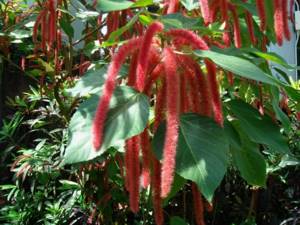
The indoor representative of Akalifa has furry inflorescences up to 50 cm long . The most common color is purple. The peculiarity of this species is that it blooms throughout the year.
Akalifa can be grown both in open ground and in garden pots in apartment conditions.
Botanical description of the plant
The plant is perennial, herbaceous, and forms large loose turfs. The rhizome is short, reaches a height of 50-120 cm, the leaves are flat, linear in shape, pointed, rough, green, sometimes with a bluish bloom, 4 to 10 mm wide. The inflorescence is characteristic of a plant of the panicle family. Its length is 3-10 cm, and its width is 6-9 mm. The spikelets have an elliptical shape and are collected in branches of three or four pieces.
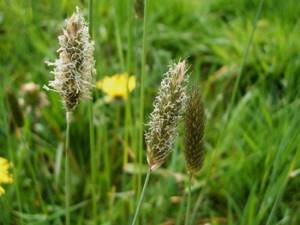
Meadow foxtail (grass family) blooms in June, fruiting occurs in July. It is noteworthy that the plant belongs to the morning cereals. Its flowering can be observed in the early hours - from 4-5 to 7-8 in the morning. The fruit is an ovoid, flattened grain, 4-6 mm long, with small spines. Fruiting occurs in the second year of growth, pollination occurs by wind. In grassland it can grow in one place for up to 10 years.
Home care
Foxtail is a heat-loving plant. It does not tolerate drafts. Strong gusts of wind can break the plant. The optimal temperature is 20-25 degrees. In winter, the temperature should not fall below 16 degrees.
For normal growth, the flower needs diffused light and a large amount of moisture.
The shrub should be grown on nutritious soil with good drainage . Fertilizing should be done during the period of active growth - from March to September. For this purpose, complex mineral fertilizers are used 2 times a month.
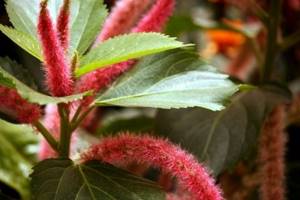
Young specimens need to be replanted every year. Akalifa, mature, is replanted every 3-4 years. This procedure is best carried out in the spring.
The plant needs to be pruned periodically . The old akalifa is cut off, leaving 20-30 cm. To make it produce new shoots faster, the flower is covered with a glass cap. Pruning must be done with gloves. Poisonous juice should not come into contact with the skin.
You will find all the subtleties and nuances of caring for this beautiful plant in a separate material.
2.Foxtail - planting and care at home
2.1.Reproduction, growing from seeds
It is most easily propagated by dividing large plants during transplantation. Seeds are sown in spring in a moist mixture of peat and sand. Seedlings are kept at a temperature of at least 20° C.
↑ Up,
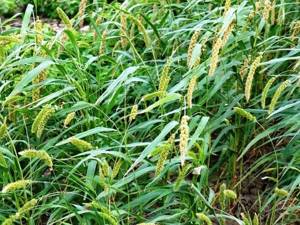
↑ Up,
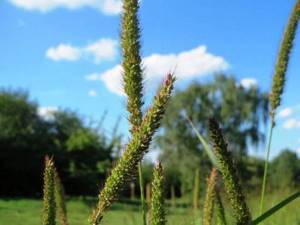
2.2.When it blooms
Flowering can occur at any time of the year, with each plant blooming for 1-3 weeks. In indoor culture, plants bloom only with proper care.
↑ Up,
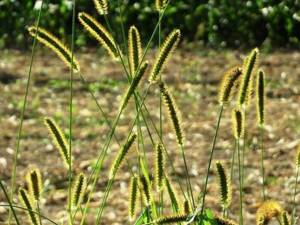
2.3.Temperature
The ideal temperature range for growing bristleweed is 18 - 22 ° C throughout the year. The bristlecone does not have a dormant period and does not like extreme heat.
↑ Up,
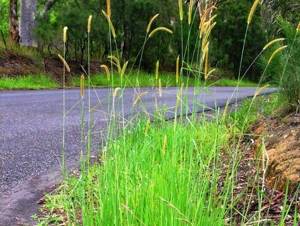
2.4.Lighting
Shade the plants during the daytime in summer and spring; in the morning and evening, the setaria will be happy to bathe in the rays of the sun.
2.5.Care
Foxtail is very easy to grow indoors; novice gardeners can handle this task. Trim flower stalks after they die and remove old dead foliage to maintain an attractive, neat appearance.
↑ Up,
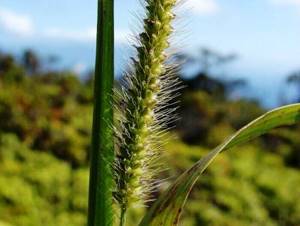
2.6.Soil
Loves light, loose soils with a high content of coarse sand. Tolerates even fairly poor soils with good drainage.
2.7.Transplant
Setaria grows quickly and its root system fills the entire space of the pot; it needs annual replanting in spring.
2.8. Diseases and pests
Prolonged exposure to direct sunlight on summer days can burn the plant's leaves. The lower leaves turn yellow during prolonged drought. With a lack of nutrients, the development of the bristlecone slows down. Harmful insects rarely attack the plant; sometimes mealybugs appear.
Insects - pests
| Insect name | Signs of infection | Control measures |
| Mealybug or feltworm | The surface of the leaves and shoots is covered with a fluffy, cotton-like white coating. Plants lag behind in development | Folk remedies : spraying with soap and alcohol solution. Infusions of tobacco, garlic, cyclamen tubers, alcohol treatments, and pharmacy tincture of calendula have worked well. Chemicals : green soap solution, Actellik, Fitoverm. |
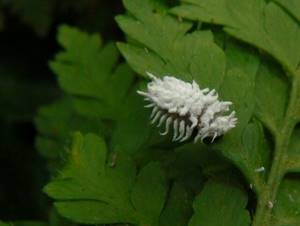
2.9.Feeding
Every 2 weeks, feed the bristlecone with water-soluble fertilizers during the period of active growth. In the fall, fertilizing can be stopped.
↑ Up,
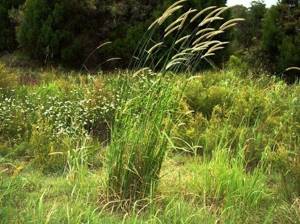
2.10.Spraying
Air humidity is high. Spraying should be done once a day, in the morning, with soft water at room temperature. To increase air humidity, you can also use a room humidifier or place the plant pot on a tray with wet pebbles.
2.11.Watering
In summer, watering should be abundant and regular. The soil is kept evenly moist, but not waterlogged. Setaria does not like drying out. In the winter months, the frequency of watering depends on the temperature; the soil can be dried to half its depth.
↑ Up,
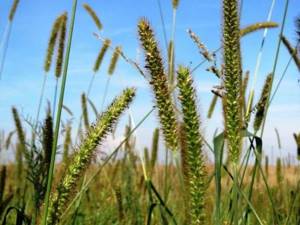
2.12.Purpose
Setaria spikelets can be used as dried flowers.
Note.
Hydroponics.
Care problems
When growing akalifa, gardeners face a lot of difficulties. Main problems:
- The appearance of wet brown spots on the leaves.
- The leaves begin to wither. This occurs due to overdrying or waterlogging of the soil.
- Pallor and loss of color. These deviations indicate a lack of light.
- The appearance of dark spots on the leaves. They appear as a result of drafts and hypothermia.
Properly selected care will avoid such problems and preserve decorative properties.
Propagation of the Fox Tail flower
Reproduction is most often carried out by cuttings; in rare cases, planting is carried out using seeds:
- The cuttings should be about 8cm long.
They take root well and quickly take root in the sand. The temperature for normal rooting should be about 25 degrees. The plant needs to be constantly moistened. After the first buds and leaves appear, the flower can be transplanted to a permanent place. Such manipulations are recommended to be carried out in the summer. - Seeds are planted in the ground in early spring. This will require a mixture of peat and sand. After planting, the ground is covered with film. Periodically it needs to be moistened and ventilated. After two leaves appear, the seedlings are planted at a distance of 3-4 cm from each other.
Diseases and pests
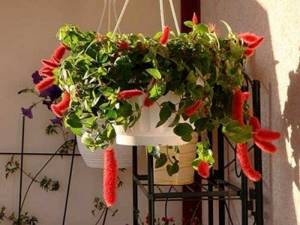
- scale insects;
- aphids;
- tick.
Insecticides used to control insects:
- Spider mites feed on sap. Because the plant is small, it cannot be seen with the naked eye. Symptoms of the lesion are yellow spots; in advanced cases, white cobwebs are observed. To prevent the appearance of such an insect, you need to periodically spray the flower and moisten the humidity.
- Parasitism by aphids leads to leaf curling and shoot death. To get rid of it, you need to manually remove pests from the flower. After this, treatment is carried out with an insecticide that contains permethrin.
In the future, the bush should be periodically inspected for pests.
Timely measures taken will help avoid the proliferation of insects and the death of the plant:
- If the semi-shrub begins to turn yellow and the leaves fall off, you need to adjust the amount of light and watering regime. If necessary, akalifa is sprayed with water.
- If the air temperature is incorrect, the leaves begin to wither and fall off. Pale flowers indicate insufficient sunlight. Brown spots indicate fungal infection. In this case, you need to use a fungicide.
- Nitrogen fertilizers can solve the problem of slow growth and pallor.
Foxtail Care
Foxtail is a light-loving plant, so the planting site should be well lit, but the plant should be slightly shaded from direct rays. Otherwise, the plant will lose its bright color. In the period from spring to autumn, akalifa needs abundant watering. In winter, it is necessary to maintain soil moisture depending on the weather, so that the soil is not too dry. Spraying is one of the most important steps, since the plant prefers high humidity.
Foxtail prefers warmth, but at a temperature of +20, the plant feels as good as possible.
We also must not forget about fertilizing; organic and mineral fertilizers are used for this. Feeding is carried out from March to autumn; in winter the plant is not fed.
Pinch the plant for a more luxuriant form of akalifa, as they grow very quickly. This process removes some of the buds from the upper shoots.
Pruning foxtail is needed to renew the plant; it is carried out every year, preferably in February or March, before the start of the growing season. All shoots of Akalifa are removed and only small stumps, approximately 45 centimeters, are left. After pruning, the plant is sprayed and a plastic bag is put on. When working with foxtail, you must be extremely careful, as the juice of this plant is poisonous.
Replanting Foxtail, which is carried out every year, allows the plant to rejuvenate.
Medicinal properties
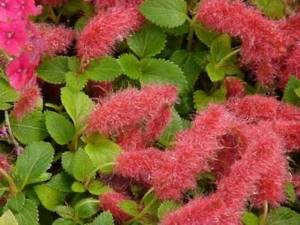
- bronchial asthma;
- bronchitis;
- pneumonia.
In Malaysia, this plant is used to brew tea. A tonic is prepared from the roots and leaves, which normalizes intestinal function.
Fox tail is widely used in homeopathy . However, the dosage of this component should be minimal, as it is poisonous.
The benefit of the plant also lies in saturating the air with phytoncides. They destroy pathogenic bacteria.
Akalifa is a beautiful and unusual plant. It requires proper air humidity and a warm climate. If you follow simple rules, this poisonous plant will be completely safe.
Caring for Akalifa at home

All acalyphs prefer good lighting, but the plant should not be placed under direct sunlight. However, with a lack of light, the bright color is lost and the plant becomes stretched. In summer, the optimal temperature for akalifa bristly is +20...+24°C, in winter - not lower than + 16...+18°C. Akalifa does not like drafts and sudden changes in temperature; it is better not to take it out into the fresh air in summer. When growing the plant, place the flower pot on a southeast or southwest window.
Due to the fact that Foxtail is a “resident” of tropical origin, air humidity and timely watering are very important for it. In summer, watering should be increased. Spraying must be done very often. With a lack of moisture, the leaves lose their elasticity and droop.
It is advisable to replant adult plants once every two to three years. In order not to disturb the root system, you can replace the top layer of soil with a new one. However, it is advisable to replant young plants once a year.
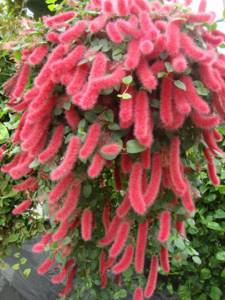
From March to September, twice a month, the flower is fed with mineral or organic fertilizers. During the winter months, Akalifa does not need feeding and is at rest. In February, the stems of the plant are shortened to 20-25 centimeters, and the dried “tails” are removed. With good care, Akalifa blooms almost constantly from March to October. To give it a more magnificent shape and form a crown, young plants are pinched, removing buds from the upper shoots.




